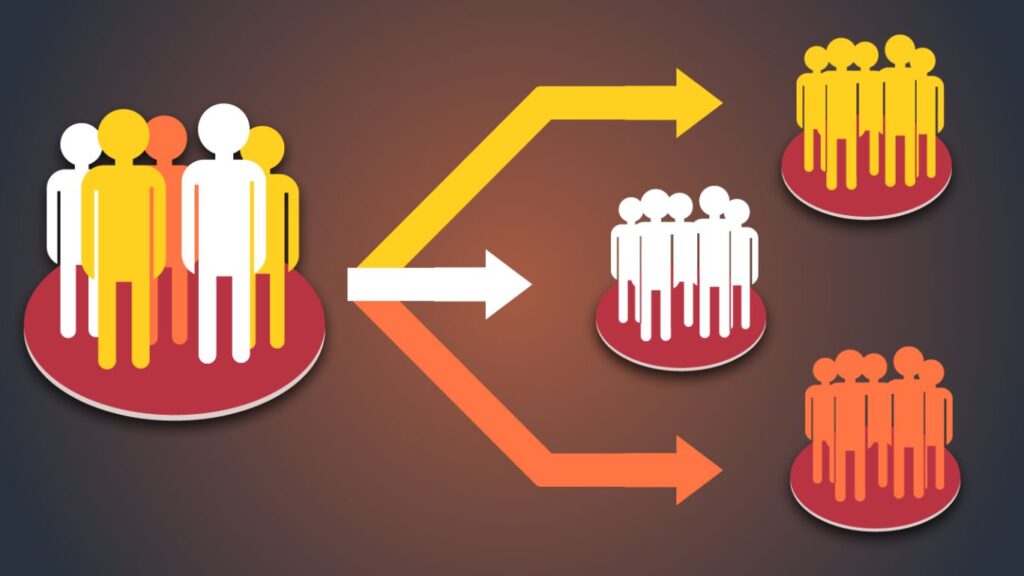What is Customer Segmentation?
Customer segmentation is the art and study of segmenting customers by dividing a broad target population into smaller groups or subsets with comparable needs, interests, preferences, and characteristics. Your target customers are unique identities having different needs and preferences, meaning there’s no one-size-fits-all solution that you can use for them.
Learn more: 5 Project Management Tips For A Business Execution 2023
Developing Leadership Skills For Business Success 2023
Therefore, your audience must be segmented in order to create personalized content and campaigns that would hit right on the nail. All in all, it is a smart technique to grab your customers’ attention right in the beginning, instead of roaming all around the world with your message. Advertising was there always. So why do we need market segmentation in place? Why spend efforts and resources on another step? To answer these questions, let’s understand the importance of market segmentation as a process.

Effective Customer Segmentation Strategies
1. Prioritize your Goals
It’s very easy to lose yourself in a quest to meet your customers’ needs.
Instead of making the visitor to your website or your prospect the #1 priority of your business, the end goals of your business plan should be your top goal.
But you must also make sure that the prioritizing doesn’t allow any kind of bias to take place.
Focus on the ROI that you seek and work to enhance your profitability. Every action that you take should help to improve the visitor counts you’re seeing, conversion rates, and ultimately your profits.
learn more: The Arts Of Business Networking: 7 Tips And Tricks 2023
2. Determine Where You’ll Derive The Most Value
Customer segmentation is often key to better business success. Segmenting them can vary by industry or by the nature of the company, but the best answer I think is to determine where you can derive the most value. It can be by sector determination, size, or maybe customer potential. Once you know your goals, then the model will follow.
3. Pick A Niche
The most successful strategy for segmenting customers is to choose a niche market that really needs the product or service you have. The next step is to create a retention strategy through techniques that enable loyalty and recurring sales
4. Don’t Confuse Behavioral Clusters with Segments
In Arts marketing, for example, the Box Office database holds detailed information on behavioral patterns (performances selected, seat choices, frequency, party size, planning horizons, geography, and so on).
However, this only describes what your segments are currently doing. It can’t tell you WHY they do these things.
People may frequently move clusters but they shouldn’t frequently move segments. To be really effective, segments should be defined by what each seeks to get out of the experience.
5. Don’t Dictate Your Market Parameters
A segmentation system delivered by marketing to other departments will often fail to become embedded within the organization. Your products and the market itself can dictate the market parameters for you as you’re looking at each segment.
You’ve got two basic options
- To take a tactics approach because you have a dependence within your market for what your goods or services can provide;
- Or to take a strategic approach because your market segments are independent and your offerings are of a want than an actual need.
Don’t make assumptions about this data because your assumptions could lead you in the wrong direction.
Also, see Free Business Plan Template 2023
6. Go Beyond The Data
A customer segmentation strategy isn’t just about data. Yes, segment your customers based on data but once you have that, what do you do with that data? Ensure your strategy includes engagement activities that are relevant and truly speak to the customer. There should be a “they get me” moment when the customer receives communications from you or experiences “delight” during touchpoints with you.
7. Avoid segmentation Bias of any kind
Remember to consider everyone in your priority segments. The biggest problem that every business entity faces in the segmentation process is bias.
With limited resources, the easy, obvious but potentially disastrous solution is to contact just those who are most actively and most recently engaged. For a time this might work but rinse and repeat this narrow selection process for any length of time. The result will be chronic audience underdevelopment.
Bias happens when questions are asked in a specific way so that they can solicit a specific answer. This alters the data that is received and may even make it incomplete. So, use extreme examples to get a true baseline of where your prospects happen to fall and this will help you identify the various subgroups that you’ll be engaging in the future. Segmentation needs to involve everyone and belong to everyone.

